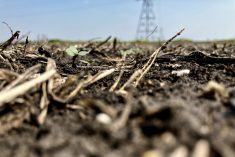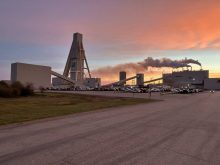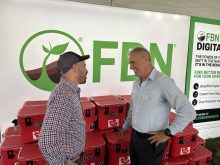CNS Canada — As more fertilizer plants are built around the world and U.S. corn acreage shrinks, the typical thinking holds that prices for urea and nitrogen should fall, but that hasn’t been the case so far for Canadian farmers.
“They’re more on the steady side,” said Todd Lewis, president of the Agricultural Producers Association of Saskatchewan. “In Western Canada here, we need an oversupply because we’ve been paying pretty good prices for nitrogen especially.”
What’s more surprising, he said, is that natural gas prices have been low for quite some time, and in his experience, they tend to follow ups and downs in the fertilizer market.
Read Also

Huge crops in South America says analyst
Although there’s a debate over the size of the South American soybean crop, there’s little doubt that it will be an enormous one, said consultant Michael Cordonnier of Soybean and Corn Advisor in Hinsdale, Ill.
Another factor to consider is falling corn acreage in the U.S. Wet weather has caused many farmers in the Midwest to switch out their corn acres in favour of soybeans.
Corn is generally one of the more nitrogen-dependent crops, so in theory that should also be driving the price lower.
“Corn acreage (in the U.S.) should be down about four million acres,” said David Asbridge, president at NPK Fertilizer Advisory Service in St. Louis, Mo.
He noted some problems with movement occurred earlier this spring when the banks of the Mississippi River swelled with floodwater and temporarily sidelined barges loaded with fertilizer.
As a result, some shipments of fertilizer were unable to make the trek down the waterway in time for major orders.
However, he said, the main factor keeping fertilizer prices locked in their current range is the oversupply situation the world is facing.
“If, for example, the price for urea perked up next year, Chinese plants would simply open or reopen and put more product out on the market,” he explained.
Asbridge said the same is true with phosphate, as Saudi Arabia is scheduled to open a major new plant at the end of the year while Morocco just recently opened a new facility.
Several potash mines in Canada have gone into shutdown mode waiting for the market to perk up, he added.
In the U.S., three more large-scale fertilizer plants have also begun operating or are expected to very shortly. Two are in Iowa; the third is in Louisiana.
This will add to the abundance of supplies in the U.S., Asbridge said.
“The nitrogen imports that have been going to the U.S. are being cut back and replaced with the production here,” he said.
However, despite the new expansions, the global market is still chugging along fairly routinely with few problems, according to Asbridge.
“It’s not like fertilizer prices have crashed through,” he said. “If that were true the price for imports coming in to the U.S. would equalize and go to Brazil. We haven’t seen a lot of global disruptions because of these plants; it’s all part of the mix.”
If there is one hope, though, for Canadian farmers to see cheaper prices, it will likely happen in June, according to a Manitoba farmer who used to work in the fertilizer industry.
“They usually put on a summer special (in the next few weeks) for nitrogen, especially liquid nitrogen,” said Dan Mazier, president of Keystone Agricultural Producers. “That’s where you’ll see the tip of the fall prices and some indications of what will happen.”
Last fall many producers were unable to get fertilizer on due to untimely wet weather.
As a result, more fertilizer was needed prior to seeding.
“A lot of fertilizer went on this spring and I did hear there were good supplies even during that, which is surprising; quite remarkable,” Mazier added.
— Dave Sims writes for Commodity News Service Canada, a Winnipeg company specializing in grain and commodity market reporting. Follow CNS Canada at @CNSCanada on Twitter.
















